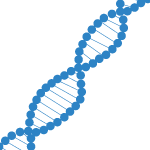What Is Tarsal Coalition?
Tarsal Coalition occurs when there is an abnormal connection between the tarsal bones in your foot (the heel bone, talus bone, navicular bone, cuboid bone and cuneiform bone). This condition most commonly affects children and teens aged 9-16.
 Causes
Causes
Tarsal Coalition is a congenital condition, meaning it’s present at birth, though it doesn’t present until later in adolescence. Most cases of Tarsal Coalition are usually caused by a gene mutation that prevents the tarsal bones from forming properly.
Other causes include arthritis, foot injury and infection.
Signs & Symptoms
Signs and symptoms usually don’t present until the child or teenager is between 9 and 16. Sometimes signs and symptoms will not present during adolescence at all, but will show up in ad ulthood. Common signs and symptoms associated with Tarsal Coalition include:
ulthood. Common signs and symptoms associated with Tarsal Coalition include:
- Stiff or rigid feet
- Foot pain (especially during physical activity)
- Limping
- Tired legs
- Leg spasms
- Flat feet
Treatment Options
Painkillers – NSAIDs like Advil or Motrin will help to relieve the pain and inflammation of your Tarsal Coalition.
RICE – Rest will help you avoid further pain. Ice and Compression will work to alleviate the pain and bring down the swelling. Elevation works to reduce any internal inflammation you may be experiencing.
 Orthotics – Orthotic devices can be used to take some of the weight off the affected area. Just be careful not to use something that will put more pressure on the back of your foot.
Orthotics – Orthotic devices can be used to take some of the weight off the affected area. Just be careful not to use something that will put more pressure on the back of your foot.
Injections – Steroid injections are used to provide temporary symptomatic relief. However, you should try conservative treatment options before resorting to injections.
Surgery – If all other treatment methods have failed to provide relief, you may want to consider surgery in order to correct the condition.